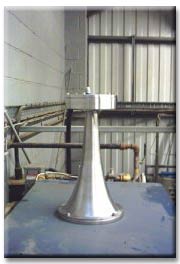 W
WAcoustic cleaning is a maintenance method used in material-handling and storage systems that handle bulk granular or particulate materials, such as grain elevators, to remove the buildup of material on surfaces. Acoustic cleaning apparatus, usually built into the material-handling equipment, works by generating powerful sound waves which shake particulates loose from surfaces, reducing the need for manual cleaning.
 W
WA besom is a broom, a household implement used for sweeping. The term is now mostly reserved for a traditional broom constructed from a bundle of twigs tied to a stout pole. The twigs used could be broom, heather or similar. The song "Buy Broom Buzzems" from Northern England refers to both types of twig. From the phrase broom besom the more common broom comes. In Scotland, besoms are still occasionally to be found at the edge of forests where they are stacked for use in early response to an outbreak of fire.
 W
WA broom is a cleaning tool consisting of usually stiff fibers attached to, and roughly parallel to, a cylindrical handle, the broomstick. It is thus a variety of brush with a long handle. It is commonly used in combination with a dustpan.
 W
WA brush is a common tool with bristles, wire or other filaments. It generally consists of a handle or block to which filaments are affixed in either a parallel or perpendicular orientation, depending on the way the brush is to be gripped during use. The material of both the block and bristles or filaments is chosen to withstand hazards of its intended use, such as corrosive chemicals, heat or abrasion. It is used for cleaning, grooming hair, make up, painting, surface finishing and for many other purposes. It is one of the most basic and versatile tools in use today, and the average household may contain several dozen varieties.
 W
WA building maintenance unit (BMU) is an automatic, remote-controlled, or mechanical device, usually suspended from the roof, which moves systematically over some surface of a structure while carrying human window washers or mechanical robots to maintain or clean the covered surfaces. BMUs are almost always positioned over the exterior of a structure, but can also be used on interior surfaces such as large ceilings or atrium walls.
 W
WA camel-hair brush is a type of paintbrush with soft bristles made from natural hairs, usually squirrel. Camel hair is not a suitable material, although historically camel was used for ancient Chinese ink brushes. It is a widely used brush in art, but is considered inferior to the more expensive sable and ox-hair brushes. In some niche applications, such as pinstriping, camel hair is an ideal brush. Camel-hair brushes have numerous uses outside of art, particularly dusting where a soft brush is needed for delicate objects or skin.
 W
WCarbon dioxide cleaning (CO2 cleaning) comprises a family of methods for parts cleaning and sterilization, using carbon dioxide in its various phases. It is often preferred for use on delicate surfaces. CO2 cleaning has found application in the aerospace, automotive, electronics, medical, and other industries. Carbon dioxide snow cleaning has been used to remove particles and organic residues from metals, polymers, ceramics, glasses, and other materials, and from surfaces including hard drives and optical surfaces.
 W
WA carpet beater or carpetbeater is a housecleaning tool used to beat carpets in order to shake dust and dirt out of them. It was in common use until the vacuum cleaner became widely affordable.
 W
WThe outdoor carpet hanger is a construction to hang carpets for cleaning with the help of carpet beaters. It is known in Germany, Poland, Lithuania, the Czech Republic, Finland, Russia, and other countries.
 W
WA carpet sweeper is a mechanical device for the cleaning of carpets. They were popular before the introduction of the vacuum cleaner and have been largely superseded by them. However, they continue to be used in many home and commercial applications because they are lightweight and quiet, enabling users to quickly clean small messes up from the floor without disturbing patrons, patients, babies and pets, and because they do not require electricity to operate.
 W
WCleret is an American manufacturer and brand of squeegees and related products based in Lake Oswego, Oregon. The company's original squeegee won an International Design Excellence Award from the Industrial Designers Society of America, and sits in the permanent collection of the Smithsonian Institution.
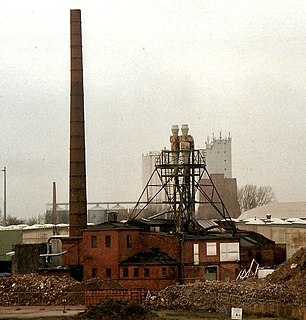 W
WCyclonic separation is a method of removing particulates from an air, gas or liquid stream, without the use of filters, through vortex separation. When removing particulate matter from liquid, a hydrocyclone is used; while from gas, a gas cyclone is used. Rotational effects and gravity are used to separate mixtures of solids and fluids. The method can also be used to separate fine droplets of liquid from a gaseous stream.
 W
WA dishwasher is a machine for cleaning dishware and cutlery automatically. Unlike manual dishwashing, which relies largely on physical scrubbing to remove soiling, the mechanical dishwasher cleans by spraying hot water, typically between 45 and 75 °C, at the dishes, with lower temperatures used for delicate items.
 W
WDry ice blasting is a form of carbon dioxide cleaning, where dry ice, the solid form of carbon dioxide, is accelerated in a pressurized air stream and directed at a surface in order to clean it.
 W
WA dustpan, the small version of which is also known as a "half brush and shovel", is a cleaning utensil. The dustpan is commonly used in combination with a broom or long brush. The small dustpan may appear to be a type of flat scoop. Though often hand-held for home use, industrial and commercial enterprises use a hinged variety on the end of a stick to allow the user to stand instead of stoop while using it. This latter improved dustpan design was patented by African-American inventor Lloyd Ray on August 9, 1897, while the first patented dustpan was by T.E. McNeill nearly 40 years prior.
 W
WA floor scrubber is a floor cleaning device. It can be a simple tool such as a floor mop or floor brush, or in the form of a walk-behind or a ride-on machine to clean larger areas by injecting water with cleaning solution, scrubbing, and lifting the residue off the floor. With advancements in robotics, autonomous floor-scrubbing robots are available as well.
 W
WA floorcloth, or floor-cloth, is a cloth, normally of flannel, used for cleaning floors. The term was previously used also for materials used in place of carpeting or to protect expensive carpets, such as oilcloth, Kamptulicon, linoleum or other materials. This use is considered somewhat antiquated today, though do-it-yourself decorators still use floorcloths as a customizable alternative to rugs. Some artists have elected to use floorcloths as a medium of expression. Most modern floorcloths are made of heavy, unstretched canvas with two or more coats of gesso. They are then painted and varnished to make them waterproof.
 W
WHot Water Extraction (HWE) is a method of carpet cleaning. It involves a combination of hot water and cleaning agents being injected into the fibers of a carpet at high pressure and all lifted soil being removed by a powerful vacuum.
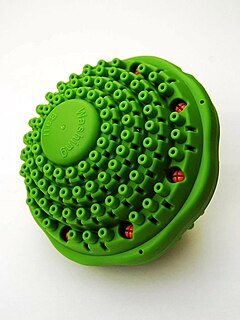 W
WA laundry ball or washing ball is a product promoted as a substitute for laundry detergent. Producers of laundry balls often make pseudoscientific claims about how these balls work and exaggerate the extent of their benefits.
 W
WA lint roller or lint remover is a roll of one-sided adhesive paper on a cardboard or plastic barrel that is mounted on a central spindle, with an attached handle. The device facilitates the removal of lint or other small fibers from most materials such as clothing, upholstery and linen. Once expended, the roll can typically be replaced with a "refill" roll. Invented in 1956 by Nicholas McKay, Sr., his most well-known product was the Lint Pic-Up, the world's first lint roller.
 W
WA mop is a mass or bundle of coarse strings or yarn, etc., or a piece of cloth, sponge or other absorbent material, attached to a pole or stick. It is used to soak up liquid, for cleaning floors and other surfaces, to mop up dust, or for other cleaning purposes. The word is attested in English as early as 1496, but new refinements and variations of mop designs have been introduced, from time to time. For example, American inventor Jacob Howe received U.S. patent #241 for a mop holder in 1837 and Thomas W. Stewart in 1893. At the 1968 Miss America protest, protestors symbolically threw a number of feminine products into a "Freedom Trash Can", which included mops.
 W
WA mop bucket cart is a wheeled bucket that allows its user to wring out a wet mop without getting the hands dirty. The cart has two buckets with the upper one usually clipped onto the lower.
 W
WNon-flammable alcohol vapor in carbon dioxide systems were developed in Japan in the 1990s to sanitize hospitals and ambulances.
 W
WA needlegun scaler, needle scaler or needle-gun is a tool used to remove rust, mill scale, and old paint from metal surfaces. The tool is used in metalwork applications as diverse as home repair, automotive repair and shipboard preservation.
 W
WA parts washer is a piece of equipment used to remove contaminants or debris, such as dirt, grime, carbon, oil, grease, metal chips, cutting fluids, mold release agents, ink, paint, and corrosion from workpieces. Parts washers are used in new manufacturing and remanufacturing processes; they are designed to clean, degrease and dry bulk loads of small or large parts in preparation for assembly, inspection, surface treatment, packaging and distribution. Parts washers may be as simple as the manual "sink-on-a-drum" common to many auto repair shops, or they may be very complex, multi-stage units with pass-through parts handling systems. Parts washers are essential in maintenance, repair and remanufacturing operations as well, from cleaning fasteners, nuts, bolts and screws to diesel engine blocks and related parts, rail bearings, wind turbine gears boxes and automotive assemblies.
 W
WIn pipeline transportation, pigging is the practice of using pipeline inspection gauges, devices generally referred to as pigs or scrapers, to perform various maintenance operations. This is done without stopping the flow of the product in the pipeline.
 W
WA pipe cleaner or chenille stem is a type of brush originally intended for removing moisture and residue from smoking pipes. Besides cleaning pipes, they can be used for any application that calls for cleaning out small bores or tight places. Special pipe cleaners are manufactured specifically for cleaning out medical apparatus and for engineering applications. They are popular for winding around bottle necks to catch drips, bundling things together, colour-coding, and applying paints, oils, solvents, greases, and similar substances. They can also be used like a twist tie.
 W
WPith, or medulla, is a tissue in the stems of vascular plants. Pith is composed of soft, spongy parenchyma cells, which store and transport nutrients throughout the plant. In eudicotyledons, pith is located in the center of the stem. In monocotyledons, it extends also into flowering stems and roots. The pith is encircled by a ring of xylem; the xylem, in turn, is encircled by a ring of phloem.
 W
WA posser or a washing dolly was historically a tool used for possing laundry by pumping the posser up and down on the laundry in the dolly tub or directly in the copper, or mixing laundry while hand washing it. Possers come in various forms; there is usually a vertical pole with a handle bar at the top but the base can be conical or domed. It has a double rim with a row of holes around the edge of the outer one. A similar tool with three legs was called a variety of names including posstick, peggy-legs, dolly-legs, and dolly-peg. Sometimes they took the form of a flat disk. The naming of each of these items was regionally specific and the specific meaning of word changed over time.
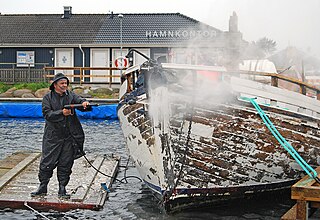 W
WPressure washing or power washing is the use of high-pressure water spray to remove loose paint, mold, grime, dust, mud, chewing gum and dirt from surfaces and objects such as buildings, vehicles and concrete surfaces. The volume of a mechanical pressure washer is expressed in gallons or liters per minute, often designed into the pump and not variable. The pressure, expressed in pounds per square inch, pascals, or bar, is designed into the pump but can be varied by adjusting the unloader valve. Machines that produce pressures from 750 to 30,000 psi or more are available.
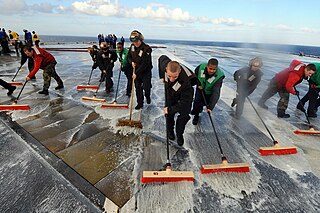 W
WA scrubber, is a type of wide brush with a long shaft used for cleaning hard floors or surfaces. Unlike a broom, which has soft bristles to sweep dirt away, a scrubber has hard bristles for brushing. It may therefore be used wet, with water or cleaning fluids. Around the brush head there may also be a removable floorcloth or mop, either soaked in water for cleaning or dry for wiping dry. However, these days other cleaning implements tend to be used for such purposes.
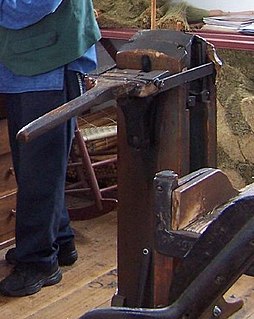 W
WThe Shaker broom vise is a specialized production vise that made the normally round broom flat to make it more efficient for cleaning purposes. The Shakers' invention revolutionized the production and form of brooms; in the process greatly expanding an industry in New England.
 W
WA soap shaker is a box entirely made from wire metal mesh with a handle. The box may be opened so as to be able to place in this box a piece or pieces of bar soap. These may be pieces that have become too small to be used as hand soap.
 W
WSonic soot blowers offer a cost-effective and non-destructive means of preventing ash and particulate build-up within the power generation industry. They use high energy – low frequency sound waves that provide 360° particulate de-bonding and at a speed in excess of 344 metres per second. Because they employ non-destructive sound waves, unlike steam soot blowers they eliminate any concerns over corrosion, erosion or mechanical damage and do not produce an effluent stream.
 W
WA sponge is a tool or cleaning aid made of soft, porous material. Typically used for cleaning impervious surfaces, sponges are especially good at absorbing water and water-based solutions.
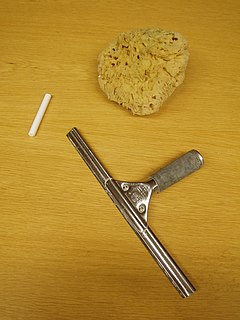 W
WA squeegee or squilgee is a tool with a flat, smooth rubber blade, used to remove or control the flow of liquid on a flat surface. It is used for cleaning and in printing.
 W
WSwiffer is a line of cleaning products by Procter & Gamble. Introduced in 1997, the brand uses the "razor-and-blades" business model; whereby the consumer purchases the handle assembly at a low price, but must continue to purchase replacement refills and pads over the lifespan of the product. Swiffer has become a half-billion dollar brand in fifteen countries.
 W
WThe Thor washing machine was the first electric clothes washer sold commercially in the United States. Produced by the Chicago-based Hurley Electric Laundry Equipment Company, the 1907 Thor is believed to be the first electrically powered washer ever manufactured, crediting Hurley as the inventor of the first automatic washing machine. Designed by Hurley engineer Alva J. Fisher, a patent for the new electric Thor was issued on August 9, 1910, three years after its initial invention.
 W
WA tongue cleaner is an oral hygiene device designed to clean the coating on the upper surface of the tongue. While there is tentative benefit from the use of a tongue cleaner it is insufficient to draw clear conclusions regarding bad breath. A 2006 Cochrane review found tentative evidence of decreased levels of odor molecules.
 W
WA "Turk's Head Brush" is a type of cleaning brush where the bristles are arranged covering the end of the stem as a half-sphere, so that the end of the stem does not come into direct contact with the surface being cleaned, especially when cleaning the inside of a cylindrical object. A larger type, mounted on a long stem and used for removing cobwebs, is called a "Turk's head broom". The name has long been in use for this type of brush, so named because its cleaning end resembles a "wild" head of hair. Turk's head brushes and brooms are used for domestic purposes, for cleaning artillery, for pharmaceutical use, for sweeping chimneys, and for other purposes.
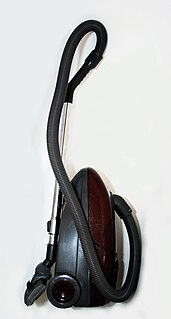 W
WA vacuum cleaner, also known simply as a vacuum or a hoover, is a device that causes suction in order to remove debris from floors, upholstery, draperies and other surfaces. It is generally electrically driven.
 W
WA vacuum truck or vacuum tanker is a tank truck that has a pump and a tank. The pump is designed to pneumatically suck liquids, sludges, slurries, or the like from a location into the tank of the truck. The objective is to enable transport of the liquid material via road to another location. Vacuum trucks transport the collected material to a treatment or disposal site, for example a sewage treatment plant.
 W
WA wash rack is a partly enclosed platform that is used to wash vehicles, heavy equipment, tools, and parts by removing dirt, grime, chemicals, invasive species, and other contaminants with a pressure washer in order to prevent corrosion and promote longer equipment lifespan. Cars, trucks, boats, construction and maintenance equipment, and even aircraft and military vehicles can all be cleaned in a wash rack. Wash racks are usually mobile and constructed from steel, although plastic wash racks exist as well as concrete formed alternatives which are sometimes installed in permanent facilities.
 W
WA washing machine is a home appliance used to wash laundry. The term is mostly applied to machines that use water as opposed to dry cleaning or ultrasonic cleaners. The user adds laundry detergent, which is sold in liquid or powder form, to the wash water.
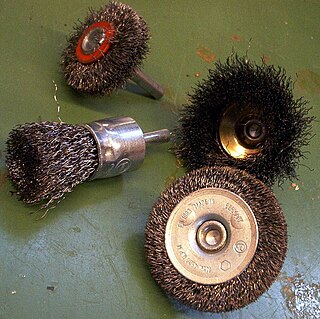 W
WA wire brush is a tool consisting of a brush whose bristles are made of wire, most often steel wire. The steel used is generally a medium- to high-carbon variety and very hard and springy. Other wire brushes feature bristles made from brass or stainless steel, depending on application. Wires in a wire brush can be held together by epoxy, staples, or other binding. Wire brushes usually either have a handle of wood or plastic or are formed into a wheel for use on angle grinders, bench grinders, pistol-grip drill motors, or other power tools.